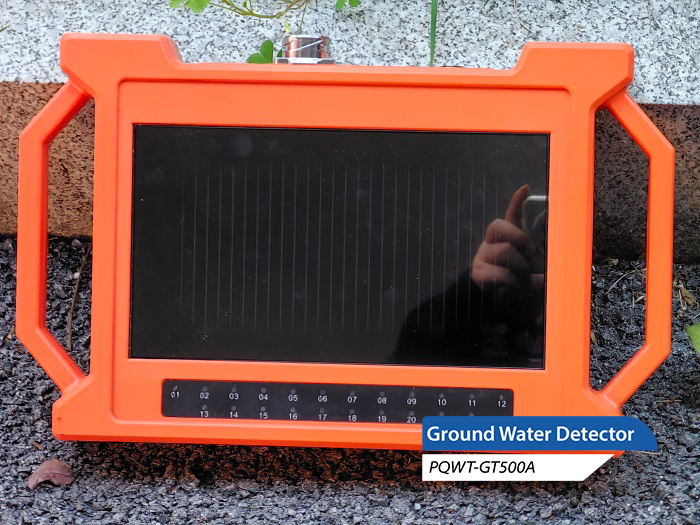In arid or water-stressed areas, finding water becomes an important task. The underground water detector, a device specialized in the search for groundwater, has become the right hand of geologists and well drillers.

The working principle of underground water detection is based on the physical properties of groundwater. Groundwater has a benign electrical conductivity due to the fact that it contains dissolved electrolytes. When an electric current is passed through groundwater, these electrolytes react with the current, causing a change in the conductivity of the current. By measuring this change, we can determine the presence of groundwater as well as information about its location, depth, water table line, and water yield.
There are two main types of underground water detection: nuclear magnetic resonance (NMR) well finders and natural electric field well finders.
The NMR water finder is a high-end device that utilizes NMR technology to directly probe for underground water. This technology pioneered the direct water search by geophysical methods and is widely used in water resources exploration around the world. However, due to the relatively expensive price of NMR water finders, their use is costly.
Another common type of well-finding instrument is the natural electric field well-finding instrument. This instrument uses the electrical differences of underground rocks and ores as the basis to measure the natural earth electromagnetic field of a number of different frequencies in the electromagnetic field generated by the change rule, to study the electric field and different geological bodies produce anomalies to achieve the solution of geological problems. Compared with the nuclear magnetic resonance water finder, the natural electric field water finder is more affordable and suitable for wider use.
Regardless of the type of drilling water finders, they all play an important role in the process of finding groundwater resources. These devices can not only improve the efficiency of water search, but also help us better understand the distribution and flow of groundwater, providing an important basis for our water resources management.
In a word, the well-drilling water finder is a powerful tool for us in finding and utilizing groundwater. Through their working principle and technical characteristics, we can better understand the distribution and flow of groundwater and provide better protection for our life and ecological environment.
Hunan PQWT Research Institute GT series of automatic mapping water finder is based on the earth's electromagnetic field as the field source, based on the electrical conductivity differences of different underground geological structures, through the measurement of the pattern of change of the electric field components at different frequencies, to study the geological structure and changes in the situation, scientific search for groundwater resources geologic tectonic changes in the real-time display of the curve diagram. A simple one-key operation automatically generates the geological profile, getting rid of the cumbersome computerized mapping. On the spot, you can quickly understand the geological structure and analyze the specific information of aquifers, fissures, faults, caves, etc. The instrument is widely used in different terrains, such as plains, hills, mountains, plateaus, basins, etc. to quickly analyze the changes in geological structure and determine the location of the wells, aquifers, and the depth of the aquifers.








